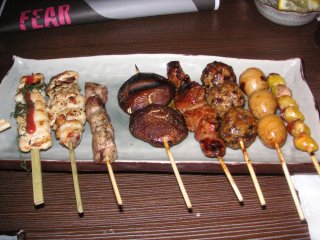
If there is only one place to visit in Shanghai, that place have to be Xiangyang market. This market is named to be the greatest infringement of copyright laws and nothing can be more sinful than that. It appears to be a sensational experience to explore the country's sinful scenes, while the liberated self, of the oppressed Singaporean, awaits for freedom. Dropping a piece of rubbish on the streets feels totally therepeutic. Unfortunately, this Xiangyang market has closed down on the last days of June 2006, and the image of sinful Shanghai is set to improve superficially.
Once any foreigners approach the market or just step out of the taxi, flocks of traders will swarm over, offering their goods, from watches, bags, pens. Obviously, the good are the tempting counterfeits. However, how tempting or how irritating this may be, do not attempt to follow these people. Because what they are offering is the same as anywhere found in the market, only that they will bring you to walk a long distance for that. Once inside the market, all morales run loose just as vendors run towards the potential customers. Copyright or infringement? It only applies back at home, not in China defintely.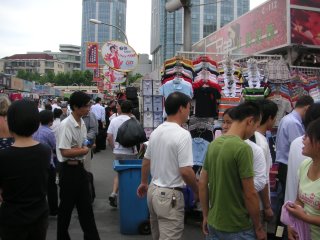
Customers, mainly tourists, whether Europeans, Singaporeans or Koreans, are mostly attracted to the goods that the market provides. Everyone knows that all goods are fake copies of the authentic stuff but hardly anyone could resist when these products cost only a fraction of the real goods. One might imagine that these goods are mostly of poor quality, that breaks down after several usage. True, but the quality of many products comes close enough to pass off as authentic. Include some service-oriented stuff, plus some packaging, no one can suspect these goods can be fake. Previous visits to Thailand markets provides similar attractions, but the quality of goods in Xiangyang way surpass that of Thailand. It is hard to imagine, but this is the truth.
However, one needs to bargain through to get the goods reasonably cheap. Because the vendors will sell their goods at a very good profit margin. For example, one should try to cut the offered price down to at least one-third or one-quater of the price offered. Now, the art of negotiating starts. Of pretence, convincing speech, trickery, persuasive acts, sweet talking, are some important skills to learn and put into practice. One can be sure that these vendors use the same tricks to counter the customers by selling them their products. Of course, the faking of not interested in the offered price for the fake goods and pretending to leave the shop, is totally useful because the vendors are likely to chase after the customers. When attempting this act, one must always remember that there are one hundred other stores that sell the exact same item. Do not turn heads once leaving the store, in order to appear most convincing. This is business and nothing personal.
The stereotype of Caucasians being morons at bargaining or being generous is quite untrue. In this place, Caucasians, male or female, engage in aggressive bargaining. If they cannot get the goods at their desired cheap price, they will just turn and walk away. No hard feelings. But the vendors will pull them back to try to make their sale. However, being Caucasian in this market, means that one is more likely to be pestered by vendors into purchasing their stuff. Asians are perhaps less popular. There was an interesting negotiation being two Europeans who bargain their way when they finally whip out their truimp card, the Euro, and the vendor accept it immediately, even though the absolute amount is lower.

With proper Chinese shopping malls charging obscene prices, Singaporeans or any tourists can certainly get to spend their RMB freely in this bargin market. And it will be one of those few places left, where one is able to practice the way of negotiation, while bringing pretence, counterattack, shrewdness to the next new level. However, this market will be closed at the end of June 2006, so bargain-hunters or immoral shoppers have to obtain the name cards given by these vendors in order to find similar tempting stuff at other locations when the market closes.


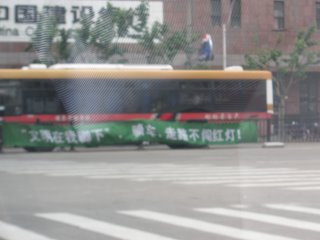

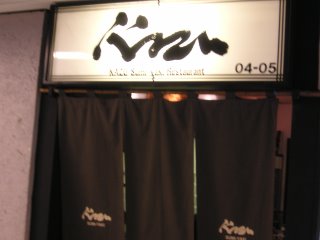
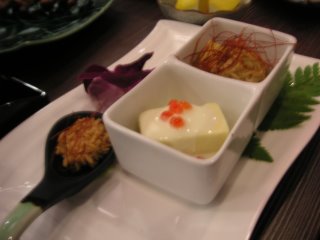 The main course of yakimono, that supposedly attracts many diners to its barbeque repertoire, even though this restaurant is located at quite a secluded corner of Singapore. It has a wide array, ranging from the simple chicken, to more exotic items like black pork and different organs of a chicken carcass. This proof to be not only gastronomical but also quite an anatomical experience. However, the yakimono does not taste as wonderful or surprising as the appetisers. Actually the different sticks,though with different pricing, tends to taste very similar with each other and does not to leave much of a strong impression. Probably ''acceptable'' would be the best description for their trademark items. With the appetisers, eight sticks of barbequed sticks, rice and soup, it still cost a reasonable $23 and above for the whole set.
The main course of yakimono, that supposedly attracts many diners to its barbeque repertoire, even though this restaurant is located at quite a secluded corner of Singapore. It has a wide array, ranging from the simple chicken, to more exotic items like black pork and different organs of a chicken carcass. This proof to be not only gastronomical but also quite an anatomical experience. However, the yakimono does not taste as wonderful or surprising as the appetisers. Actually the different sticks,though with different pricing, tends to taste very similar with each other and does not to leave much of a strong impression. Probably ''acceptable'' would be the best description for their trademark items. With the appetisers, eight sticks of barbequed sticks, rice and soup, it still cost a reasonable $23 and above for the whole set.